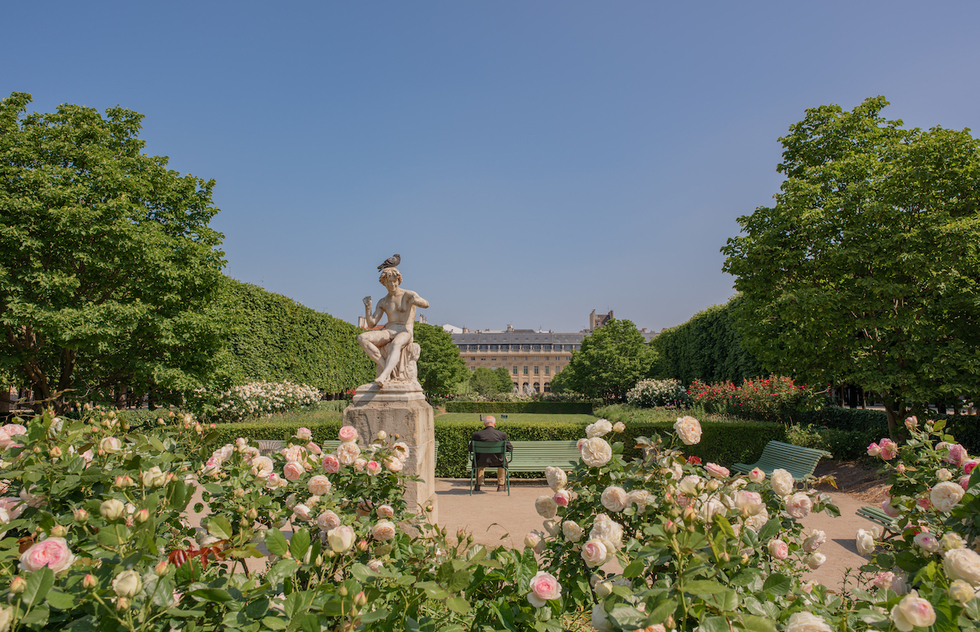The gardens and long arcades of the Palais Royal are not only a delight to stroll through but were also witnesses to one of the most important moments in French history.
But first the backstory: Built by Cardinal Richelieu, the lavish palace was left to the king upon his prime minister’s death. It was subsequently occupied by a number of royal family members (including Louis XIV as a child) until it came into the hands of a certain Duke Louis Phillippe d’Orleans at the end of the 18th century. An inveterate spendthrift, the young lord soon found himself up to his ears in debt. To earn enough money to pay off his creditors, he came up with the shockingly modern idea of opening the palace gardens to development, building apartments on the grounds. The bottom floor of these lodgings, which make up three sides of the enclosure you see today, were let out as shops, cafes, and boutiques. Though the neighbors screamed, their cries were drowned out by the success of the new project, which made the area into a commercial hub. What’s more, since the police had no power over these royal grounds, all sorts of usually illegal activities were given free reign here. Gambling houses and bordellos sprang up between the shops and cafes, and the gardens became the central meeting place for revolutionaries. Things came to a head on July 12, 1789, when Camille Desmoulins stood up on a table in front of the Café de Foy and called the people to arms—2 days later, the mob would storm the Bastille, igniting the French Revolution.
The glory days of the Palais Royal would come to an abrupt end in 1815, when a new Louis-Philippe showed up, decided this was not the way to treat the home of his ancestors, and kicked everyone out. Once the royals finally left in the 19th century, the palace was taken over by various government ministries, and the apartments in the galleries were let out to artists and writers, among them Collette and Jean Cocteau.
Today the shops in the arcades are very subdued, and mostly a smattering of high-end designer clothes, and a couple of pricey restaurants, including the legendary Grand Véfour. The cour d’honneur on the south end is filled with black-and-white-striped columns by Daniel Buren; though most Parisians have now gotten used to this unusual installation, when it was unveiled in 1987 it caused almost as much of a stir as Camille Desmoulins.






 About our rating system
About our rating system


